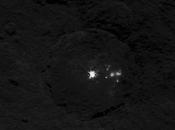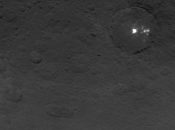 A team led by the University of Warwick has pinpointed a new type of exceptionally powerful and long-lived cosmic explosion, prompting a theory that they arise in the violent death throes of a supergiant star. These explosions create powerful blasts of high energy gamma-rays, known as gamma-ray bursts, but while most bursts are over in about a minute, this new type can last for several hours.
A team led by the University of Warwick has pinpointed a new type of exceptionally powerful and long-lived cosmic explosion, prompting a theory that they arise in the violent death throes of a supergiant star. These explosions create powerful blasts of high energy gamma-rays, known as gamma-ray bursts, but while most bursts are over in about a minute, this new type can last for several hours.
The first example was found by astronomers on Christmas Day 2010, but it lacked a measurement of distance and so remained shrouded in mystery with two competing theories put forward for its origin. The first model suggested it was down to an asteroid, shredded by the gravity of a dense neutron star in our own galaxy, the second that it was a supernova in a galaxy 3.5 billion light years away, or in the more common language of astronomers at a redshift of 0.33. A new study by a team of scientists led by Andrew Levan at the University of Warwick finds several more examples of these unusual cosmic explosions and shows that the Christmas Day burst took place in a galaxy much further away than the two theories suggested. This research has been presented at the GRB 2013 Symposium in Nashville, Tennessee on Tuesday 16 April. Using data from the Gemini Telescope in Hawaii, the scientists calculated that this ultra-long gamma-ray burst had a redshift of 0.847. This gives it a location of approximately half-way to the edge of the observable Universe, or 7 billion light years away. Armed with its location, Levan’s team, which included scientists from an international collaboration, has developed a new theory to explain how it occurred. They suggest this kind of burst is caused by a supergiant, a star 20 times more massive than the sun, which evolves to become among the biggest and brightest stars in the universe with a radius of up to 1 billion miles – up to 1,000 times that of the sun. They believe the ultra-long durations of the Christmas gamma-ray burst and two other similar bursts are simply down to the sheer size of the supergiants exploding in a supernova.

University of Warwick: Strange new bursts of gamma-rays point to a new way to destroy a star
arXiv: A new population of ultra-long duration gamma-ray bursts






